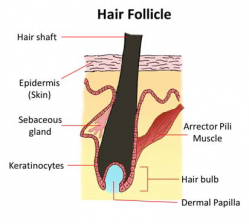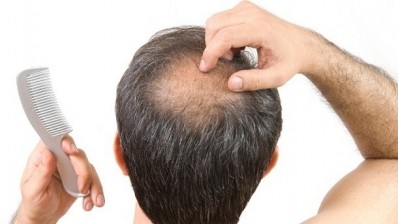Bioengineers create follicle model that could lead to treatment for hair re-growth

Researchers at the Institute of Bioengineering and Nanotechnology (IBN) say they have engineered a new hair follicle model that could help to develop an active ingredient for cosmetic hair regeneration products.
“We have applied our cell and tissue engineering expertise to create a hair follicle-like structure that is very similar to the native hair follicle,” said Professor Jackie Ying, IBN executive director.
“This model allows us to better understand the mechanisms that control the development and growth of hair follicles. We hope that our invention would lead to novel ways to treat hair loss, which affects millions of people worldwide.”
Hair follicles are a regenerating organ with growth cycles
The researchers work has concentrated on the fact that the hair follicle is a regenerating organ that produces a hair shaft during each cycle growth.
They looked closely at this growth cycle process, which revolves around interactions between two main cell types – epithelial cells that surround the hair shaft and dermal papilla cells.
The team then developed a three dimensional hair follicle model to study these cell interactions in an effort to identify the parameters for treatments targeting both male and female pattern baldness.
They then came up with a 3D hair follicle model that mimics the size and cell arrangement of a real hair follicle, and according to the team, this was achieved by combining two types of hair cells – dermal papilla cells and keratinocytes.
“Measuring the diameter of a strand of hair, our hair follicle-like structure exhibits similar cell behavior as real hair follicles,” says IBN Team Leader and Principal Research Scientist Dr. Andrew Wan elaborated.
“In our model, the hair cells are implanted into very fine and transparent fibers, which can be easily examined under the microscope unlike conventional models, making them ideal for drug testing applications.”
Commercialisation could lead to new actives targeting hair growth
The scientists report that, using the model, they found the cells in the hair follicle-like structures could be manipulated to switch on genes that are essential to the hair growth stage.
The next stage of the research showed that when these manipulated hair follicles were transplanted on to mice, they continued to develop into natural-looking hair structures.
The scientists say that the model could be used to test active ingredients for personal hair growth, as well as drug therapies for pharmaceutical companies.


![Latest developments from the South Korean beauty market. [Getty Images]](/var/wrbm_gb_food_pharma/storage/images/_aliases/wrbm_tiny/publications/cosmetics/cosmeticsdesign-asia.com/headlines/brand-innovation/korea-focus-able-c-c-kolmar-and-more-in-this-k-beauty-round-up/17357973-1-eng-GB/Korea-focus-Able-C-C-Kolmar-and-more-in-this-K-beauty-round-up.jpg)

![Able C&C has furthered its partnership with Japanese discount chain Daiso with new makeup launch. [A'pieu]](/var/wrbm_gb_food_pharma/storage/images/_aliases/wrbm_tiny/publications/cosmetics/cosmeticsdesign-asia.com/headlines/brand-innovation/a-pieu-and-daiso-launch-exclusive-2-makeup-line/17339117-1-eng-GB/A-pieu-and-Daiso-launch-exclusive-2-makeup-line.jpg)
![Down Under Enterprises is setting sights on the Asian market as environmental sustainability and traceability become increasingly important. [Getty Images]](/var/wrbm_gb_food_pharma/storage/images/_aliases/wrbm_tiny/publications/cosmetics/cosmeticsdesign-asia.com/headlines/market-trends/down-under-enterprises-shifts-focus-to-china-as-environmental-sustainability-traceability-come-into-the-spotlight/17304932-1-eng-GB/Down-Under-Enterprises-shifts-focus-to-China-as-environmental-sustainability-traceability-come-into-the-spotlight.jpg)
![News updates from Shiseido, Dr.Ci:Labo, Sephora, and more. [Shiseido]](/var/wrbm_gb_food_pharma/storage/images/_aliases/wrbm_tiny/publications/cosmetics/cosmeticsdesign-asia.com/headlines/brand-innovation/updates-from-shiseido-dr.ci-labo-sephora-and-more/17334944-1-eng-GB/Updates-from-Shiseido-Dr.Ci-Labo-Sephora-and-more.jpg)

![Clariant has underscored the importance of localisation strategies and distribution capabilities in China with beauty trends evolving at a rapid pace. [Getty Images]](/var/wrbm_gb_food_pharma/storage/images/_aliases/wrbm_tiny/publications/cosmetics/cosmeticsdesign-asia.com/article/2024/04/16/clariant-emphasises-importance-of-localisation-in-the-era-of-viral-trends/17327969-1-eng-GB/Clariant-emphasises-importance-of-localisation-in-the-era-of-viral-trends.jpg)
